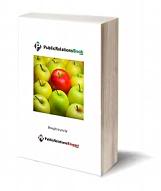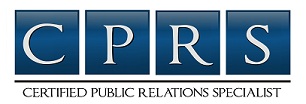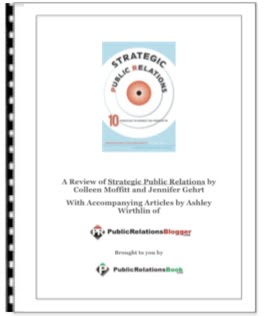________________________________________________________________________
 Media Relations is the act of involvement with various media for the purpose of informing the public of an organization’s mission, policies and practices in a positive, consistent and credible manner.
Media Relations is the act of involvement with various media for the purpose of informing the public of an organization’s mission, policies and practices in a positive, consistent and credible manner.
Typically, media relations involve coordinating directly with the people responsible for producing the news and features in the mass media. The goal of media relations is to maximize positive coverage in the mass media without paying for it directly through advertising.
Many people use the terms "public relations" and "media relations" interchangeably; however, doing so is incorrect. The definition of media relations is somewhat narrower. Media relations refer to the relationship that a company or organization develops with journalists, while public relations extend that relationship beyond the media to the general public.
Dealing with the media presents unique challenges in that the news media cannot be controlled - they have ultimate control over whether news angles pitched to them are of interest to them or their audiences. Because of this, the ongoing facilitation of communication and relationships between an organization and the news media is vital. One way to ensure a positive working relationship with media personnel is to become deeply familiar with their "beats" and areas of interests. Media relations and public relations practitioners should read as many magazines, journals, newspapers, and blogs as possible as they relate to one's practice - (i.e., if you represent clients in the financial field, it's obvious practitioners should have a general idea as to the types of stories being covered in this area, and they should read the major dailies as well as The Wall Street Journal in order to develop future strategies).
Working with the media on the behalf of an organization allows for awareness of the entity to be raised as well as the ability to create an impact with a chosen audience. It allows access to both large and small target audiences and helps build public support and mobilizing public opinion for an organization. This is all done through a wide range of media and can be used to encourage two-way communication.
By using media relations effectively, public relations practitioners can enhance the reputation of their respective organizations while establishing good working relationships with journalists that will serve them well in future endeavors.
Key elements of strategically based media relations:
Media Relations | A Brief Overview
________________________________________
 Media Relations is the act of involvement with various media for the purpose of informing the public of an organization’s mission, policies and practices in a positive, consistent and credible manner.
Media Relations is the act of involvement with various media for the purpose of informing the public of an organization’s mission, policies and practices in a positive, consistent and credible manner.Typically, media relations involve coordinating directly with the people responsible for producing the news and features in the mass media. The goal of media relations is to maximize positive coverage in the mass media without paying for it directly through advertising.
Many people use the terms "public relations" and "media relations" interchangeably; however, doing so is incorrect. The definition of media relations is somewhat narrower. Media relations refer to the relationship that a company or organization develops with journalists, while public relations extend that relationship beyond the media to the general public.
Dealing with the media presents unique challenges in that the news media cannot be controlled - they have ultimate control over whether news angles pitched to them are of interest to them or their audiences. Because of this, the ongoing facilitation of communication and relationships between an organization and the news media is vital. One way to ensure a positive working relationship with media personnel is to become deeply familiar with their "beats" and areas of interests. Media relations and public relations practitioners should read as many magazines, journals, newspapers, and blogs as possible as they relate to one's practice - (i.e., if you represent clients in the financial field, it's obvious practitioners should have a general idea as to the types of stories being covered in this area, and they should read the major dailies as well as The Wall Street Journal in order to develop future strategies).
Working with the media on the behalf of an organization allows for awareness of the entity to be raised as well as the ability to create an impact with a chosen audience. It allows access to both large and small target audiences and helps build public support and mobilizing public opinion for an organization. This is all done through a wide range of media and can be used to encourage two-way communication.
By using media relations effectively, public relations practitioners can enhance the reputation of their respective organizations while establishing good working relationships with journalists that will serve them well in future endeavors.
Key elements of strategically based media relations:
- The media strategy is documented and implemented according to principles agreed between public affairs and senior management.
- A media policy is drawn up with responsibilities, profiles and positioning.
- Media activity is planned to reach target audiences in direct support of your organizational mission and goals.
- Media contact is broadly divided into proactive and reactive activities.
- Systematic use of consistent messages is made (eg. about organizational performance, issues, use of new technologies and corporate behavior including environmental policy, corporate governance and corporate social responsibility).
- Spokespersons’ roles are documented, communicated and supported.
- There are clear triggers for engagement as part of the issues management/stakeholder relations process
- Decisions are agreed beforehand on the follow-up activities after media coverage.
Article Source.
Popular choices
- Non Gamstop Casino
- Mejores Salas De Póker
- Non Gamstop Casinos
- Siti Casino Online Non Aams
- Migliori Siti Casino Online
- UK Online Casinos Not On Gamstop
- Non Gamstop Casino Sites UK
- Non Gamstop Casino Sites UK
- UK Casino Not On Gamstop
- Casinos Not On Gamstop
- Online Casino
- オンラインカジノ
- UK Casino Not On Gamstop
- UK Casino Not On Gamstop
- Reputable Non Gamstop Casinos
- Casinos Not On Gamstop
- Best Non Gamstop Casinos
- Non Gamstop Casino
- Casinos Not On Gamstop
- Slots Not On Gamstop
- Non Gamstop Casino
- Casino Non Aams
- Casinos Not On Gamstop
- Betting Sites Not On Gamstop
- Casino Online Italia
Subscribe to:
Post Comments (Atom)






Comments (0)
Post a Comment